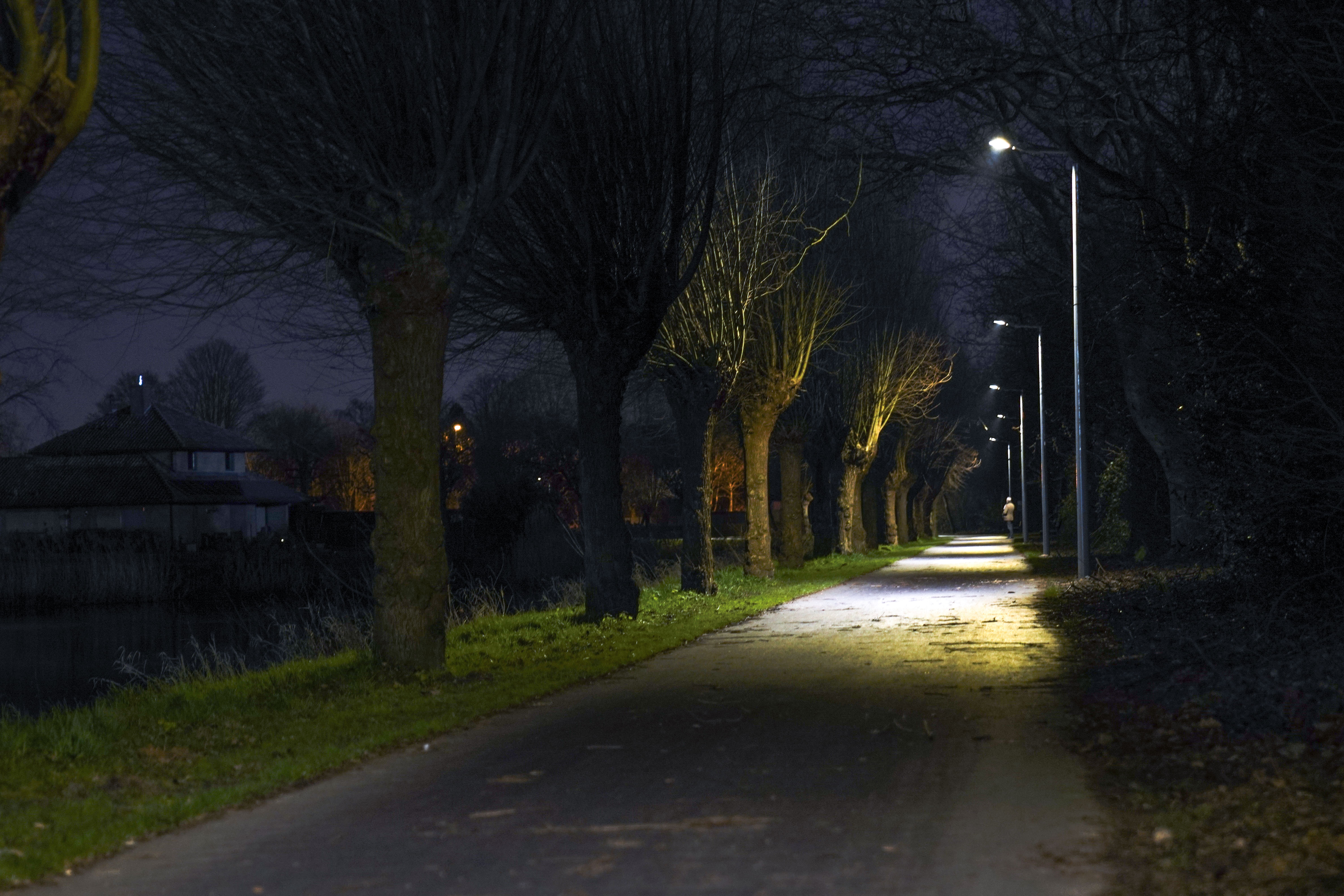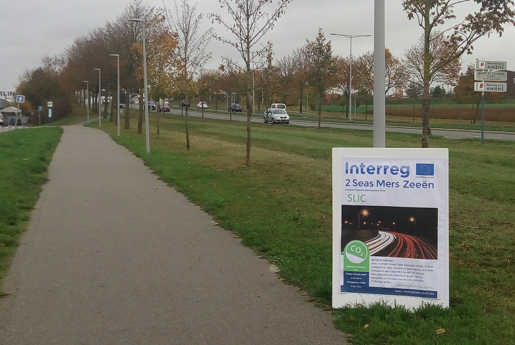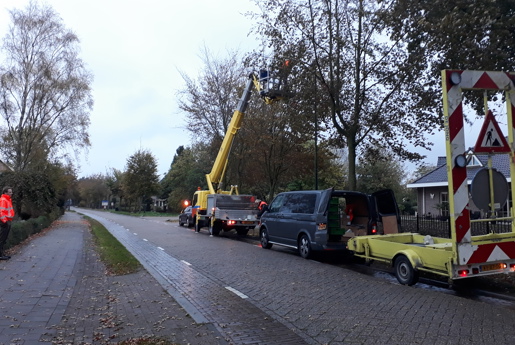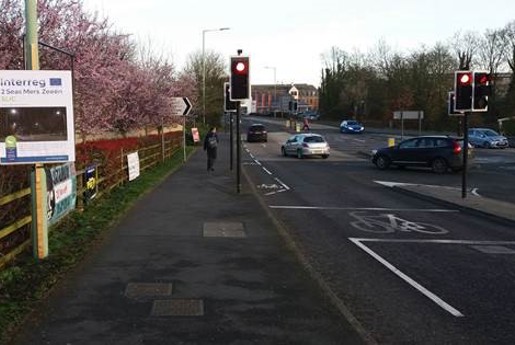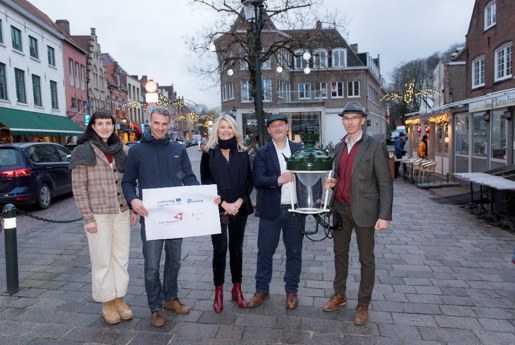Night lighting bad for animals and people
The negative effect of night-time lighting on health and biodiversity is greater than expected. This is evident from a study commissioned by five Flemish provinces. Based on 1,500 scientific studies, specialists have developed a practical guide for local authorities to consider the negative effects on sleep, weight and mental well-being. The practical guide with lighting tips for local authorities will be available at the end of 2023 via the websites of the Flemish provinces.
Night lighting affects people's sleep. It is a well-known fact. But it also makes the great tit sleep poorly; the river lamprey is confused by it, and the firefly cannot find its other half. In humans, night lighting may increase the risk of obesity and mental problems. This was determined by the Flemish Institute for Nature and Forest Research (INBO) and PIH – Knowledge Centre for Environment and Health in two literature studies commissioned by the five Flemish provinces and the Interprovincial Knowledge Centre (IPKC).
The provinces are working on a practical guide with lighting tips because cities and municipalities must switch to LED lighting by 2030. Together with the updated ecological darkness needs map, the practical guide should help local authorities make the right choice per region and street. For example, the City of Ypres had already drawn up a fauna-friendly lighting plan.
The switch to LED lighting is the time for cities and municipalities to make the right choices and consider the influence of artificial light on animals, plants, and people. To help them, the five Flemish provinces and the Interprovincial Knowledge Centre (IPKC) had two literature studies carried out. The PIH – Knowledge Centre for Environment and Health brought together scientific studies on the relationship between night-time lighting and human health. The Institute for Nature and Forest Research (INBO) analysed the studies on the effects of night-time lighting on biodiversity. The provinces are developing a practical guide for local authorities based on these literature studies.
Relationship between lighting, sleep and cancer
Exposure to artificial light in the evening and at night has negative consequences for our sleep. In the evening, the amount of the sleep hormone melatonin in our blood increases so that we feel it is time to sleep. At night, melatonin ensures a good night's sleep and recovery processes in the body. Light, and bright blue light disrupts the production of melatonin. Scientific studies show that more nighttime lighting is associated with more prescriptions for sleep medications, shorter sleep duration and dissatisfaction with sleep quality.
Studies also show a possible increased risk of breast cancer for people who live in an area with a lot of - especially blue - night lights. Because melatonin is also said to contain anti-cancer properties, the influence on melatonin levels may also increase the risk of obesity and affect our mental well-being.
Firefly cannot find a mate.
Night lighting also affects animals. The reproduction of fireflies is jeopardised because males do not notice the light signals of females. Birds start singing earlier in the day and lay their eggs earlier in the season when there are not enough caterpillars to feed the young. Illuminated roads also form barriers in the landscape. For example, Finnish research shows that the river lamprey, a rare fish species that also occurs in Belgium, stops its migration because of an illuminated bridge above its migration route.
The solution? No universal blueprint
All these examples make it clear that night lighting harms biodiversity and humans. But not all types of lighting have the same effect, and not every animal species experiences the same negative consequences.
Moreover, it is becoming increasingly apparent that it is essential for local authorities to consider their residents' sense of safety when devising their lighting plan with new LED lamps. Although registered crime in Western society has fallen sharply since 2010, including in Belgium, insecurity is increasing. In addition to night lighting, there are other solutions to remove the sense of insecurity: smart lighting, removing visual obstacles or potential hiding places for perpetrators by pruning trees and shrubs or placing benches for more social control.
Daan Dekeukeleire of INBO: “There is no 'one-solution-fits-all'. Local authorities must consider several factors to decide when switching to LED lighting. The most important rules of thumb are to dim or turn off the lights in residential areas where and when possible, choose red or amber lights as much as possible and consider the sense of safety of pedestrians and cyclists by also taking other measures. In nature and rural areas, we must maintain darkness as much as possible and create dark networks of stream and river valleys.”
A practical guide and a darkness map help local authorities.
It is, therefore, quite a challenge for local authorities to switch to LED lighting. Therefore, a group of experts will work on the findings from the studies and write a practical guide with lighting tips for local authorities*. The ecological darkness needs map was also updated. This shows the possible impact of nighttime outdoor lighting on plants and animals: the darker the area, the higher the impact. With the practical guide on the effects on safety and crime, a local government can weigh the choices for lighting.
Deputy Vanlerberghe (competent for nature, environment, landscape, climate and mobility): “In the past, the Province of West Flanders pioneered critical thinking about lighting through the Public Lighting knowledge platform. This has caused many local authorities to dim and extinguish or use fauna-friendly lighting. A practical guide has been drawn up through a literature study that links crime, safety and public lighting. The purpose of this practical guide is to guide local authorities and to remove resistance where possible when it comes to (demonstrable or otherwise) effects on safety and crime. I am pleased that the aspects of biodiversity and health have been investigated and provide even more input to local authorities to make well-founded decisions about their public lighting.“
Fauna-friendly lighting plan
The city of Ypres drew up a fauna-friendly lighting plan at the time, which is still used as a basis for retrofitting and switching to fauna-friendly lighting where necessary. In the meantime, INBO is preparing a connectivity study, which may already provide an overview of the results that the city council wants to use when refining the fauna-friendly lighting plan.
This knowledge support is achieved through a collaboration between the provinces of Antwerp, West Flanders, East Flanders, Flemish Brabant and Limburg, PIH, Institute for Nature and Forest Research (INBO), Fluvius, Agency for Roads and Traffic (AWV), Het Agency for Nature and Forests (ANB), Environment Department, Scheldt-Durme Regional Landscape (RLSD), Leve(n) De Nacht vzw (Lichthinder vzw).
The report is in Dutch and can be found .
